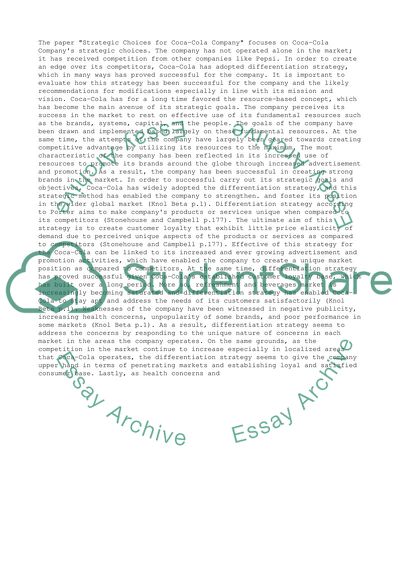Cite this document
(“Strategic Choices for Coca-Cola Company Research Paper”, n.d.)
Retrieved from https://studentshare.org/management/1440678-strategic-choices-for-coca-cola-company
Retrieved from https://studentshare.org/management/1440678-strategic-choices-for-coca-cola-company
(Strategic Choices for Coca-Cola Company Research Paper)
https://studentshare.org/management/1440678-strategic-choices-for-coca-cola-company.
https://studentshare.org/management/1440678-strategic-choices-for-coca-cola-company.
“Strategic Choices for Coca-Cola Company Research Paper”, n.d. https://studentshare.org/management/1440678-strategic-choices-for-coca-cola-company.


